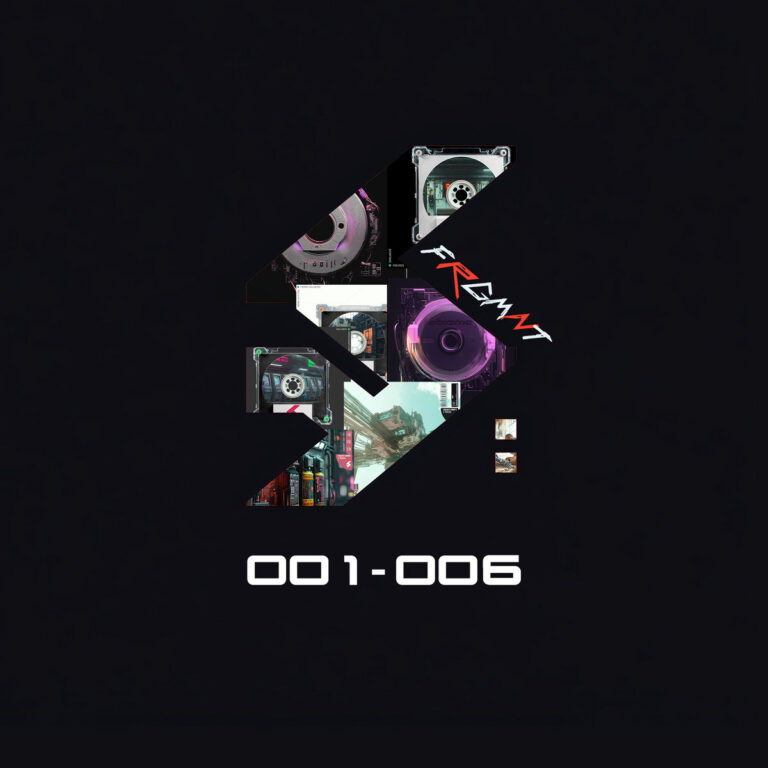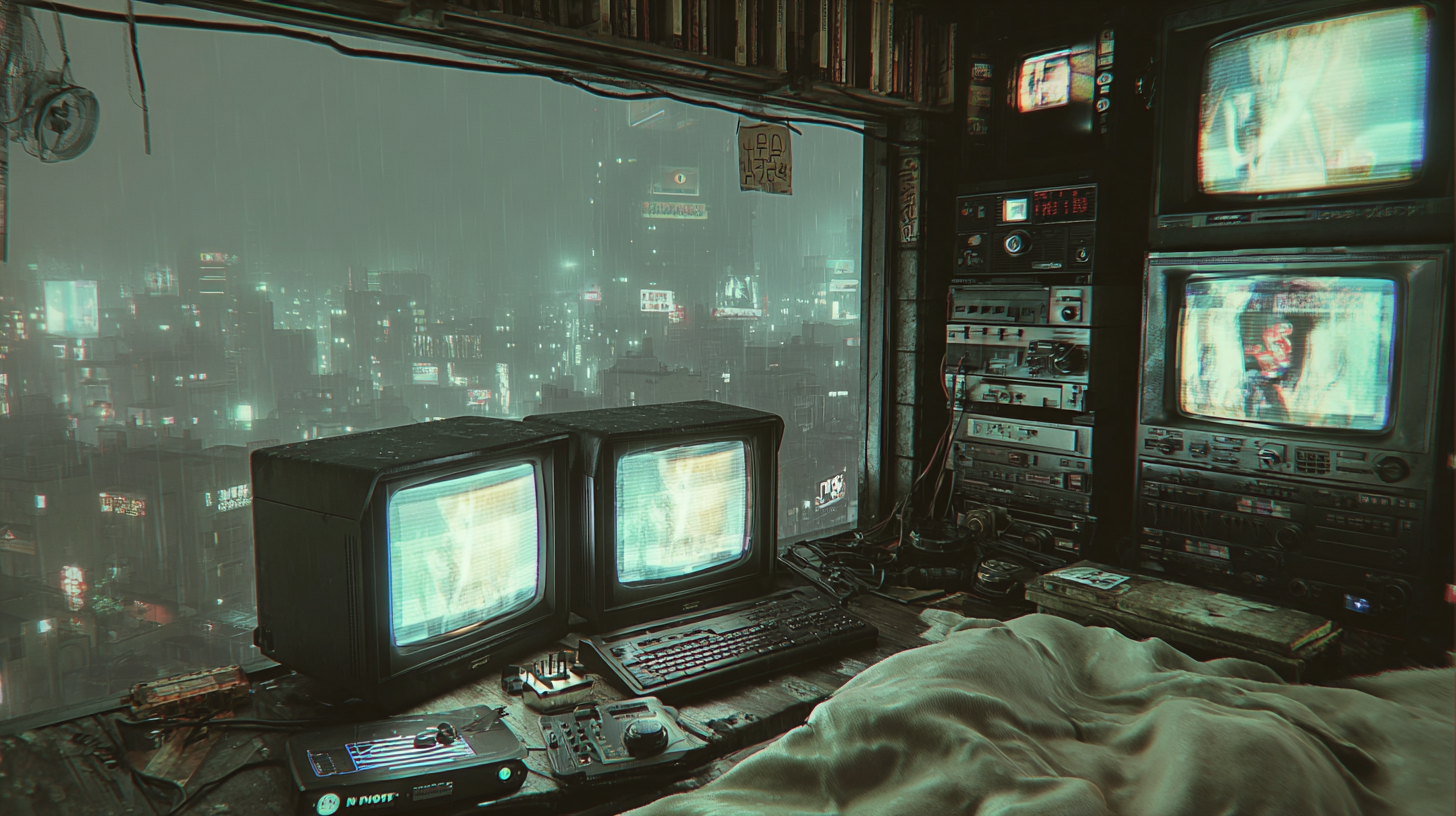Broken Flow : Deconstructing IDM in the Age of AI and Algorithmic Sound
Broken Flow is out now and it means a lot more to me than just another enabl.ed release. It’s more than a tracklist. More than just another glitchy drop. This one… this is a system. A personal one. A creative one. It’s kind of my way of breaking a loop I’ve been stuck in and I mean that both musically and mentally.
This whole thing started out as a transition project. Like I’ve said before, it lives in between the Error Balm series and the newer material I’m building toward. But as I kept working on it, I realized it wasn’t just a bridge—it became a statement, a glitch within my own process.
This Genre - "IDM", Whatever You Wanna Call It - It's Changing. Fast.
Let’s be real: IDM has gone through so many eras. So many shifts. And the “post-IDM” movement has created a space for a ton of innovation but also a lot of repetition. I’ve caught myself wondering: how much of this stuff are we just recycling?
Like… how far can we actually push these sounds before we’re just feeding them back into the system in a slightly more aesthetic wrapper?
And the thing that really gets me is this:
We’re living in an AI-driven culture now, and music-especially this kind of electronic music…is getting pulled into that, whether we like it or not.
We talk a lot about authenticity in music. People say they hate AI-generated songs, or they want the “human” in music back. But here’s the catch: how do you expect to make ‘authentic’ music when you’re using machines to begin with?
If the process is already wrapped in algorithms – your DAW, your synths, your plugins, even your mastering chain…aren’t we already halfway there?
That’s where Broken Flow started to shift for me. I realized I had to stop trying to make it perfect. I had to let go of the idea that there’s some standard to hit. I wanted to explore what happens when the beat breaks, when you let things sit wrong, when the melody doesn’t resolve, when it all gets a little uncomfortable but still you.
This has been a weird year creatively.
The AI Paradox (and Moving from FL Studio to Ableton)
I didn’t just change DAWs , I changed my relationship with control on my sound and what tools I use to do that.
When I moved from FL Studio to Ableton Live, I thought it would be a workflow upgrade. And in many ways, it was: session view, intuitive routing, faster iteration. But I didn’t expect the deeper realization that followed.
Ableton doesn’t just let you make things faster, it actively nudges you into certain outcomes. Presets are one thing, but it goes deeper than that. With Max for Live, generative sequencing tools, and granular engines built right into the workflow, you start to feel like you’re collaborating with something else. Something that might know more than you.
And that’s the paradox I’ve been wrestling with:
Producers say they want authenticity in our music.
Producers say they don’t want AI-generated tracks.
But then we use tools built entirely on algorithmic behavior and predictive structures.
Let me give you some real examples of how this hit me during the making of Broken Flow.
Grain Scanner (Max for Live Device by Amazing Noises)

This one felt like a glitch dream. You drop in any sample, and it gives you this constantly shifting texture based on grain position, spread, jitter, and density.
I was running mangled versions of my own kick/bass patterns into it and just letting it ride. Sometimes it would return rhythms I never would’ve programmed. Sometimes it felt like the device was remembering something I forgot.
It wasn’t just granular, it was improvisational glitch memory.
And it sounded alive.
Probability Pack

This was a huge one. Tools like Melodic Steps and Rhythmic Probability let you assign chance percentages to whether a note will actually trigger. So instead of sequencing a beat, you’re curating uncertainty.
That played right into the Broken Flow concept.
I’d set a melodic phrase, then reduce the certainty of every note.
The rhythm would evolve naturally, no two loops ever fully the same.
This is where it gets philosophical:
When your machine is making decisions, is it still your music?
LFO Control + Modular Modulation (Max Devices)
I ran multiple LFOs to modulate filter cutoff, reverb size, even pitch drift on pads. But the key was to desync them… different rates, different shapes.
What I got back was rhythmically unstable textures that felt like they were breathing. These aren’t just automations. These are machine behaviors you shape, but don’t own. Sometimes they overshot my intentions and that’s where the magic happened.
We’re creating music that sounds too mechanical for the human ear… by being human enough to break the machine.
That’s the paradox:
You either try to sound human and risk sounding artificial…
Or you embrace the machine and discover something real.
Tools like Max for Live and the broader Ableton ecosystem aren’t evil. They’re not even AI in the way we define it right now. But they’re built on systems that teach us to produce in certain ways. They assume aesthetics. They contain tendencies.
Broken Flow was my way of pushing back on those tendencies.
Not to reject the machine, but to argue with it.
To let it answer back.
To find music in the miscommunication.
If we’re going to keep calling this genre I.D.M, then it needs to keep evolving. And evolving means letting go of the illusion of total authorship.
Sometimes, to make it human, you have to let it get weird.
The whole point of ‘this release’ was to let it bend.
Let things be off.
Let a melody feel just slightly wrong.
Let a rhythm fall out of time, then stutter back in.
Let repetition happen to the point of nausea.
Let a sample loop just a bit too long, on purpose.
And yeah, I know that might throw some people off. I know people might hear these tracks and think, “Wait, what’s happening here?”
Good.
I want that.
Because I.D.M was never supposed to be clean, pristine, or sterile.
It was born from breaking stuff, from curiosity, from pushing systems into places they weren’t meant to go. And somewhere along the way, I feel like the genre forgot that. Maybe we all did, at times.
A Note on Influence (and Why Clean Error Changed Everything)

I also wanna shout out the Clean Error fam I worked together with and have upcoming projects with soon…, because honestly… working with other artists on the label has shaped the way I produce in major ways. I’ve been hearing these wild, glitch-heavy ideas from collaborators and labelmates, and it’s challenged me to step out of the zone I was operating in.
You know that feeling where you’re like, “Dang, I didn’t know I could do that”? That’s what they brought out of me.
This album is full of risks I wouldn’t have taken years ago. Tracks with no typical flow. Weird tuning. Sections that repeat when they probably shouldn’t. But that’s the point.
Broken Flow is me getting out of the safety net.
Final Thoughts
So yeah. This isn’t a press release. I’m not here to break down every track for you.
You can listen and hear it for yourself.
But I just want people to know what Broken Flow really is:
A reset.
A letting go.
A refusal to follow the rules – even when the rules sound amazing.
A glitch that remembers it used to be a melody.
And if you’re still making music in a world full of algorithms and machine learning and expectations… maybe this is your reminder that it’s okay to sound wrong.
It’s okay to break the loop.
It’s okay to glitch the flow on purpose.
Thanks for riding with me.
—J
enabl.ed


